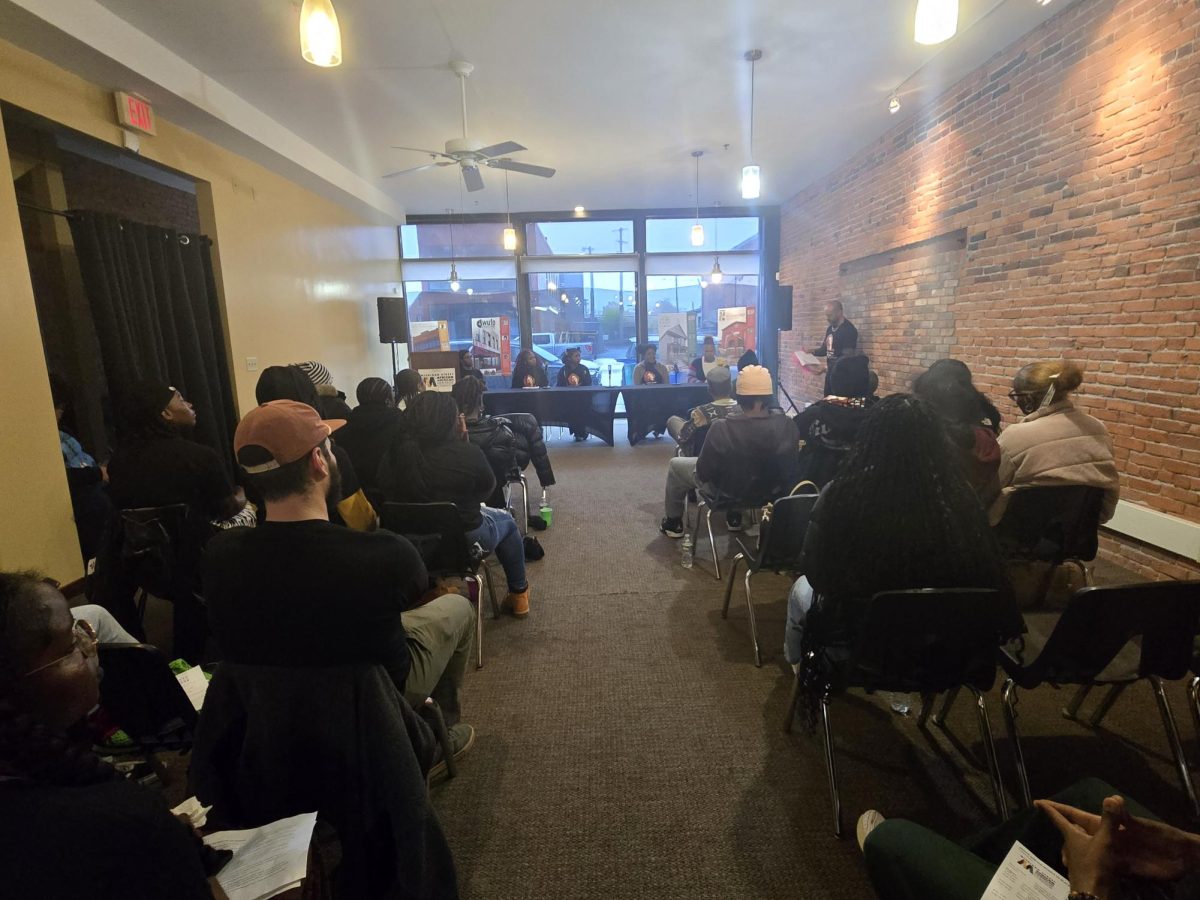Highway to the drone zone
February 12, 2015
It was summer. Everybody was having a great time. Good music, or at least what I consider to be good music, was playing. People were dancing, smiles on their faces.
It was a picturesque kind of day that couldn’t have been dampened by a single thing, or so I thought. I was at the MOE. concert down at Canalside when, all of a sudden, a strange flying object appeared in the sky.
This wasn’t a UFO, although the operator of this flying object was unidentified to me. The object was a drone, and it didn’t receive a very warm welcome at the show. Some people in the crowd gave uninviting hand gestures to the drone, others attempted to knock it out of the air.
Drones are unmanned aerial vehicles (UAVs) that are flown into the air by pilots who control them from the ground. In essence, they are remote controlled aircrafts, but more technologically advanced.
This particular drone seemed to be privately owned. It appeared to be recording video footage of the concert. A radio station that was sponsoring the concert could have operated it, or maybe some affiliate with the band in order to record video for an upcoming music video. That would have been better than a random, private owner, right?
I wondered why people seemed to dislike it so much. But then I realized: regardless of who the owner of the drone was, it was invading people’s privacy.
I let that thought marinate in my head for the days following. It was during the marinating process when I discovered that a drone could be purchased by anyone. I was at the Walden Galleria Mall when I spotted drones for sale to the public.
For around $400 or less, you too can invade people’s privacy! The reason I say less is because if you are really tech savvy, you can even build your own fully functional drone.
It’s no wonder why the Federal Aviation Administration (FAA) placed a “no drone zone” around University of Phoenix Stadium for this year’s Super Bowl.
In a news release from January 28, the FAA stated:
“The FAA bars unauthorized aircraft – including drones – from flying over or near NFL regular- and post-season football games. The same restriction applies to NCAA college games in stadiums seating 30,000 or more fans, Major League Baseball games and many NASCAR events.”
Imagine what would’ve happened if a drone flew overhead as the Seahawks were intercepted in the fourth quarter to end their chances of winning the Super Bowl. A never before seen view of that interception could’ve been uploaded to YouTube for the whole world to see. Viewers of the video may have even noticed Bill Belichick deflating footballs on the sidelines.
Privately owned and operated drones signify the beginning of the end of privacy. No longer will you be able to go for a walk or sit in your backyard without having to wonder if you are being filmed from overhead. Maybe a drone will be at your next outdoor party, hiding behind the trees, filming your terrible dance moves.
Sure, with social media and other things, one can argue that privacy was already going out of style. But, drones make sure it’s never coming back.
While private drone use can be a bit frightening, there are some upsides to them. Freelance filmmaker Danny Cooke shot a short video using a drone. The video, which was uploaded to the video sharing website Vimeo, shows aerial shots over the abandoned city of Pripyat, Ukraine.
Despite privacy concerns, drones can be used for some pretty interesting things. They have the potential to be used to explore places we otherwise probably wouldn’t be able to see. They can give us new, never-before-seen shots of famous locations.
Like almost anything, it isn’t the product that is subject to blame, but rather how people use it. It makes sense to me that the FAA put restrictions on drones for the most watched annual sporting event in the world. It wouldn’t surprise me if more regulations were placed upon private drones in the future.
Hopefully, more drone owners use their drones to shoot the Pripyats of the world, and less of the terrible dancing we all know you do at parties.
E-mail: koster.record@outlook.com



